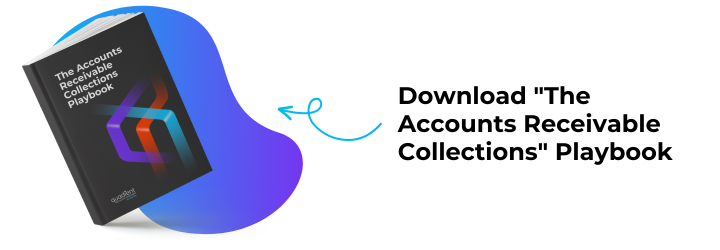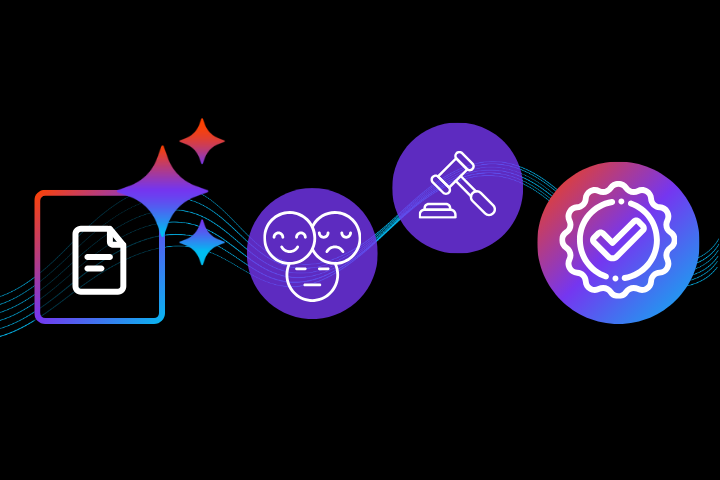
Collections is a necessary part of the credit to cash process. To put it into context:
- Accounts receivable (AR) is money owed to an entity by its customers
- Credit is the amount not yet received by the customer, but due upon a specific date or time frame
- Collections is the amount still owed once the due date has passed
Most businesses find themselves in a position of needing to manage collections. Customers may be late with payment for a variety of reasons - they did not receive the invoice, they do not have the funds to pay available, they have forgotten about the invoice, they are disputing the charges, etc.
What is the Collections Process?
The collections process
To handle cases where payment is late and there is not an active dispute case opened, businesses need a process and a resource to manage the process. The more clearly defined and broadly communicated the collections process is, the better the chance the business has of collecting the debt - and the higher their customer satisfaction scores.
The typical collections process includes the following steps:
- Overdue invoice is assigned. When an invoice becomes overdue for payment, it is typically assigned to an employee for collection activities.
- Verify past due amount. There may need to be some homework, and some adjustment, to the past due invoice if there are deductions to account for, product returns, or marketing promotions or special incentives that were offered.
- Issue dunning letters. Dunning letters, notifications to a customer that an account is past due, are usually sent at fixed intervals. Dunning letters are generally printed and sent through the postal service.
- Call the customer. In conjunction with the dunning letters, phone calls are placed to customers to discuss the reasons for lack of payment.
- Settle payment arrangements. This may take the format of instant payment over the phone, or an extension of payment deadline, or new terms for the payment arrangement.
- Adjust credit limit. Depending on the customer’s payment situation and history with the business, a review of their current credit limit may take place, and adjustments made per the credit team’s discretion and policy.
- Monitor payments under settlement arrangements. If there are special payment plans, businesses want to stay on top of the new arrangements and contact customers as soon as it appears that they will miss a scheduled payment date. This level of monitoring is required to keep customers from delaying their payments.
- Refer to a collection agency. Once all other in-house collection techniques have been attempted, many businesses shift invoices to a collection agency. At this point, the customer is often placed on a credit hold list.
- Sue the customer. If all other alternatives have failed, a business may authorize the legal staff to proceed with a lawsuit against the customer in an attempt to reclaim the debt.
- Write off remaining balance. If all collections techniques have failed, businesses may write off the overdue amount as bad debt.
Featured Resource: The Accounts Receivable Collections Playbook

What is the Cost of Collections?
The cost of collections
Collections is an expensive and labor intensive process. It’s a needed investment because the business’ cash flow is at stake, and the sooner overdue debt is collected, the healthier the business. A structured and diligent collections process can be the difference between a thriving and a dying business when you consider the data:
- An account that is 90 days past due has a 69.6% chance of being paid
- An account that is 180 days past due has a 52.1% chance of being paid
- After one year of delinquency, the chance of collecting payment falls to 22.8%
Although typically a last resort, businesses will turn to collections agencies to reclaim their debt. Debt collectors only get paid when they recover an outstanding debt, and when they do, it comes at a cost of anywhere from 25%-45% of the total amount owed.
One of the best ways to manage your collections comes before you even extend credit. Having a thorough and clear credit assessment process can minimize the risk in your collections process. Assessing credit risk takes into account the payment performance history of customers, allowing the business to be selective about whom they extend credit to. If there is an intelligent credit risk management process, then collection of accounts receivable should be less demanding.
The key to successful collections is clarity in the process and frequent, open communications with customers. The collections process can be a sensitive time for customer communications, and the more you offer consistency and professionalism in the process, the more your customers will want to work with you and take care of their debts. At the end of the day, the success of business is all about how it takes care of its customers.
As you optimize financial operations for your business, do not forget Accounts Receivable automation solutions that will ensure seamless integration of data. One way to significantly enhance efficiency is integration with your ERP system, such as Microsoft Dynamics 365, Quickbooks, Sage Intacct, or NetSuite. This streamlined approach ensures that your accounts receivable processes run smoothly.






